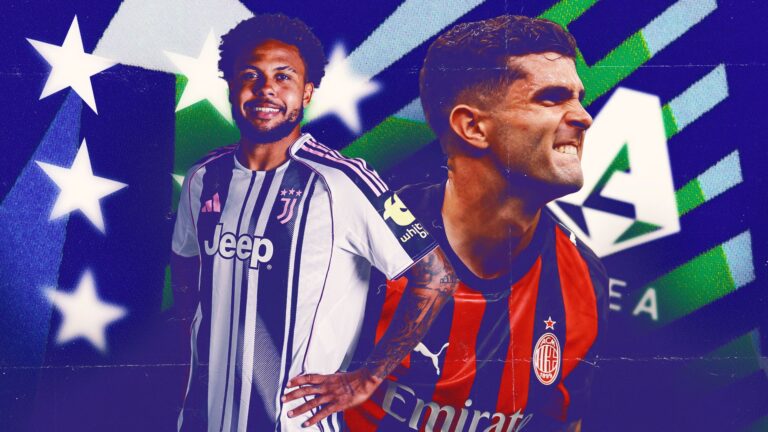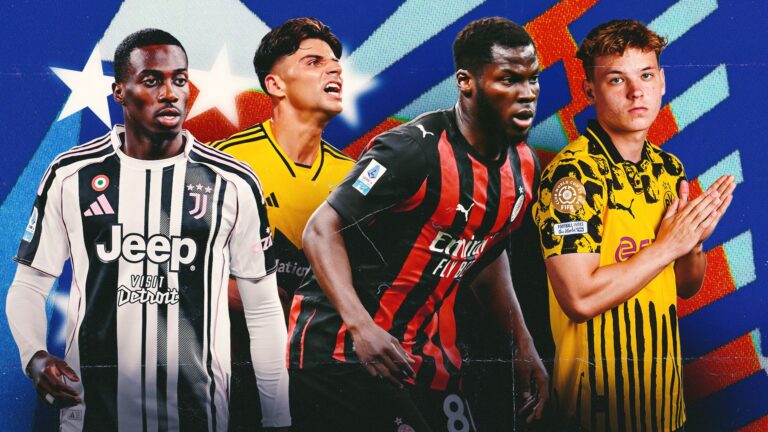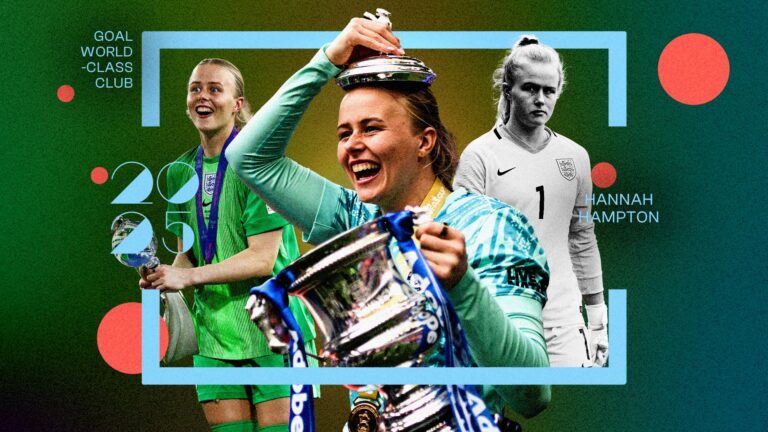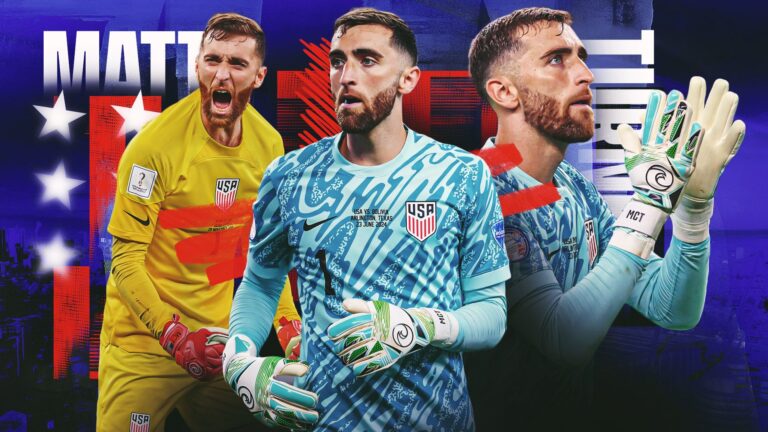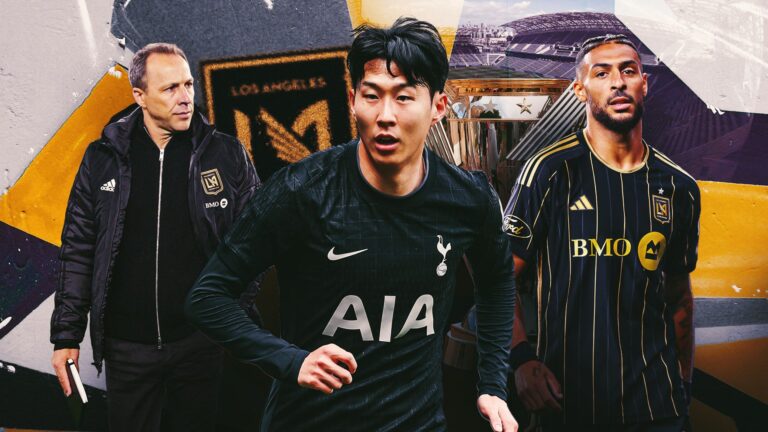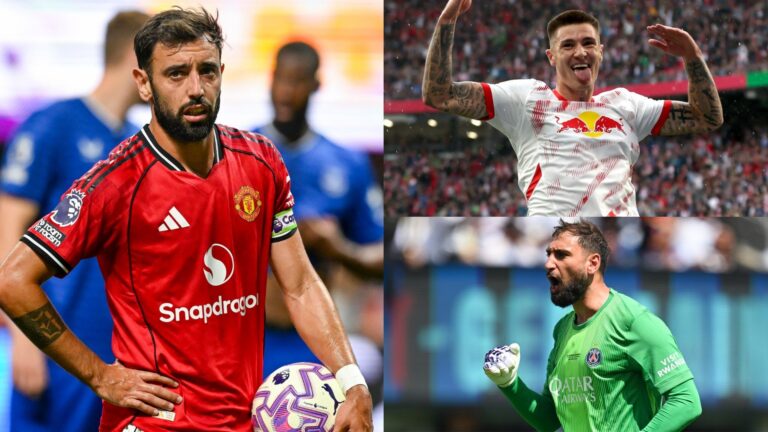Manchester United have narrowed their striker search down to two names: Benjamin Sesko and Ollie Watkins. The former could cost up to £78 million ($104m), in part because he is entering his prime years at 23 with a massive margin for improvement. Sesko’s numbers in the Bundesliga (27 goals and seven assists) are impressive albeit not world-beating, and the question is whether he can replicate that form, or even improve it, in the Premier League, as the likes of Jadon Sancho, Timo Werner and Kai Havertz have failed to do.
Watkins, meanwhile, has proven to be prolific in the English top-flight, with only Mohamed Salah and Erling Haaland bettering his tally of 75 goals in the last five seasons. He has less time on his side at the age of 29, but also a lower price tag, with Aston Villa willing to listen to offers of around £45m ($60m).
There is, of course, a third option for United to consider: Sticking with what they have got. Right now, the Red Devils can call upon the hard-working albeit blunt Rasmus Hojlund, their shiny new, high-scoring forwards Bryan Mbeumo and Matheus Cunha, the concerningly inconsistent Joshua Zirkzee and their talismanic captain Bruno Fernandes in attack. And maintaining the status quo might just be their best option, precisely because it can get the best out of Fernandes.







Manchester United have narrowed their striker search down to two names: Benjamin Sesko and Ollie Watkins. The former could cost up to £78 million ($104m), in part because he is entering his prime years at 23 with a massive margin for improvement. Sesko’s numbers in the Bundesliga (27 goals and seven assists) are impressive albeit not world-beating, and the question is whether he can replicate that form, or even improve it, in the Premier League, as the likes of Jadon Sancho, Timo Werner and Kai Havertz have failed to do.
Watkins, meanwhile, has proven to be prolific in the English top-flight, with only Mohamed Salah and Erling Haaland bettering his tally of 75 goals in the last five seasons. He has less time on his side at the age of 29, but also a lower price tag, with Aston Villa willing to listen to offers of around £45m ($60m).
There is, of course, a third option for United to consider: Sticking with what they have got. Right now, the Red Devils can call upon the hard-working albeit blunt Rasmus Hojlund, their shiny new, high-scoring forwards Bryan Mbeumo and Matheus Cunha, the concerningly inconsistent Joshua Zirkzee and their talismanic captain Bruno Fernandes in attack. And maintaining the status quo might just be their best option, precisely because it can get the best out of Fernandes.
,
United’s 2-1 win over West Ham in New Jersey laid out a compelling argument for Ruben Amorim to avoid signing a striker because Fernandes was at his very best playing as one of the two No.10s in tandem with Cunha. The Portugal international scored both of his team’s goals – the first from the penalty spot – and was at the heart of United’s best moves, setting up Hojlund’s strike off the woodwork in the opening minute as well as wasting a one-v-one opportunity against Alphonse Areola after robbing the ball deep in West Ham’s half. It was plain to see that this is where Fernandes operates best, high up the pitch as a playmaker and not further back in a deeper midfield role.
Fernandes predicted in 2024 that he would drop back into midfield so to influence games more, telling A Bola: “It’s a position I like, playing deeper, facing the game more. With the ball, it makes my game a lot easier because I have a broader view of the game and it is ideal for what we’ve talked about with the last pass, which can sometimes come from deeper on the pitch.”
Fernandes has subsequently played many matches, both under Erik ten Hag and Amorim, in such a role, but Amorim should have now learned that his captain’s best position is higher up the field.
Indeed, one of Amorim’s costliest mistakes last season was opting to play Fernandes in a deeper role in the Europa League final against Tottenham, when the captain delivered one of his worst performances of the campaign. Fernandes surrendered the ball on the halfway line in the build-up to Brennan Johnson scoring the only goal of the game. and his usual powers in attack were blunted.
“Last year, I felt sometimes I pushed him back to have more possession in the build-up and we miss Bruno near the box,” Amorim admitted after the Saturday’s friendly win over Graham Potter’s side.
While he did play well at times in the deeper role, such as in the final Premier League match of the campaign against Aston Villa and in big wins over Leicester City and Real Sociedad, his best performances – like those in the 5-4 thriller against Lyon in the Europa League, the 3-0 win at Athletic Club and the 4-0 thrashing of Everton in Amorim’s first league game at Old Trafford – came while playing as one of the twin No.10s:
Amorim has also spoken about how his new additions in attack, as well as a fit-again Kobbie Mainoo, will prevent Fernandes from being as isolated as he was last term, which led to the skipper feeling as if he had to do everything himself.
“With different characteristics from Bryan [Mbeumo] and Matheus Cunha, and I really like Kobbie Mainoo’s game, he will have more help this season,” Amorim added. “Now he [Fernandes] has more players, I feel, to help him to lead the group, and that is a good thing. He is our leader and really important, not just on the field, but off the field. He leads by example. He works really hard, is always available and, sometimes, he plays with pain. Sometimes, the problem is he gets frustrated and loses a little bit of focus of his job. Sometimes, he wants to help his team-mates so much, it is not the best thing to do.”
Amorim loves Fernandes so much that he pleaded with him in June to resist a frankly ridiculous offer from Al-Hilal which would have earned United in the region of £100m in transfer receipts and saved wages. That influx of cash could have alleviated the club’s huge financial problems, earning them 10-times the amount they brought in from their degrading post-season tour of Asia while effectively filling the hole left by losing the Europa League final and thus failing to qualify for next season’s Champions League.
So having won the battle in terms of keeping his best player, it is only logical that Amorim does everything to get the best out of Fernandes. Signing another striker, such as Watkins or Sesko, would mean United’s three new arrivals would be fill the front three spots, forcing Fernandes back into a deep-lying role. And while Hojlund and Zirkzee could accept starting some matches on the bench, it is difficult to imagine Amorim repeatedly leaving Sesko or Watkins out of his line up to accommodate others.
While neither Cunha or Mbeumo are traditional centre-forwards, Amorim has insisted that they can both play as strikers, and the time has come for United to join other top clubs in moving away from the idea of only playing traditional centre-forwards through the middle.
Runaway Premier League champions Liverpool had a lot of success playing Luis Diaz centrally for spells last season. It was only supposed to be a stop-gap solution while Diogo Jota was struggling for fitness and Darwin Nunez’s form dropped off, yet some of Liverpool’s best football of the season came with the Colombian starting up front and linking up with Mohamed Salah and Cody Gakpo. The 4-0 thrashing of Bayer Leverkusen at Anfield was one of the Reds’ standout performances of the whole season, while the same trio started in the rampant 6-3 and 5-0 wins at Tottenham and West Ham, respectively.
Admittedly, Liverpool have moved towards having a fixed striker by signing Hugo Ekitike and targeting Alexander Isak while selling Diaz to Bayern this summer, but they are from the only team to have reaped the rewards of thinking outside the box with their strikers.
Ousmane Dembele, who was always considered a winger until Luis Enrique got hold of him, produced the best season of his career while playing through the middle as Paris Saint-Germain swept to the treble. Desire Doue also played centrally when PSG beat Bayern Munich in the Club World Cup quarter-finals, and it is telling that both Goncalo Ramos and Randal Kolo Muani, whom the club paid a combined €170m to sign in 2023, have both failed to live up to their price tags. Kolo Muani was loaned to Juventus in January while Ramos started only 13 games across Ligue 1 and the Champions League last term.
While Isak, Ekitike and Arsenal new boy Viktor Gyokeres have generated the most interest in the summer transfer window and led to talk of the new age of the striker, wide forwards are proving just as prolific, if not more so. Six of the top 13 scorers in the 2024-25 Premier League were wingers or wide forwards, including Golden Boot winner Salah.
Playing Mbeumo and Cunha as interchanging forwards, with Fernandes behind them and Amad Diallo joining attacks from wing-back, would make make United highly unpredictable to defend against. Mbeumo netted 20 Premier League goals last season for Brentford – a tally no United player has reached since Robin van Persie 12 years ago – while Cunha struck 15 for Wolves.
Fernandes’ eight league goals for United pales in comparison to his new team-mates, especially considering three were from the penalty spot. But he did provide 10 assists, and that number will surely rise with the increased quality around him. If he were to play higher up the pitch more regularly, it is easy to imagine that Fernandes will get back to the form that saw him score 28 league goals between January 2020 and May 2021 following his arrival at Old Trafford.
Fernandes has talked about having a target on his back for not living up to the heights of those first two campaigns, but having Mbeumo and Cunha by his side can help him get back to those impressive numbers and, more importantly, get United back to where they want to be.


